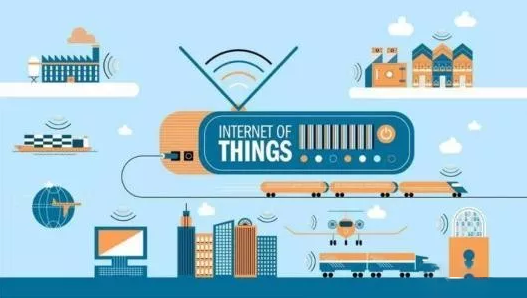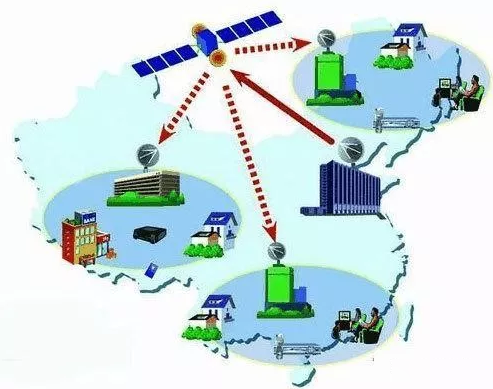8 Types of IoT Wireless Transmission Technology
With the advent of the era of the Internet of Everything, the way of linking between objects is also developing with the times. If the sensor is the touch of IoT, then wireless transmission technology is the nervous system of the Internet of Things, linking the sensors all over the Internet of Things. Before the emergence of the Internet of Things, the network access requirements were mainly concentrated on PCs and mobile terminals. Nowadays, with the development of IoT technology, wireless access is not only reflected in PCs and mobile terminals, but also in the industrial production environment, the link between objects and objects also requires network access.
Now the more common short-range wireless IoT transmission technologies are: Wi-Fi, Bluetooth, UWB, ZigBee, NFC, NB-IoT, etc. The coverage of the signal is generally between tens of centimeters and hundreds of meters. Due to the distance problem, the short-range wireless transmission technology is mainly used in local area networks, such as home networks, factory workshop networking, and enterprise office networking.
Wi-Fi
Wi-Fi is widely used in many IoT use cases, most commonly as a link from a gateway to an internet-connected router. However, it is also used for primary wireless links requiring high speed and medium range.
Wi-Fi technology is not designed to replace Bluetooth or other short-range radio technologies, and the two applications are completely different, although there are overlaps in some areas. WiFi devices are generally designed to cover a range of hundreds of meters. If you strengthen the antenna or add hot spots, the coverage area will be larger, and even the entire office building will not be a problem.
Wi-Fi wireless technology is mainly designed for mobile devices to access LAN (Local Area Network), WAN (Wide Area Network), and the Internet.
Basically, in the WiFi standard, the mobile device plays the role of the client, and the server is the network center device; there is a huge difference in the peer-to-peer structure of the interconnection between the two mobile devices with NFC and Bluetooth technology.
Support topology: star structure
Use distance: near, medium distance (hundreds of meters)
Application scenarios: mobile devices, etc.
Bluetooth
Bluetooth is a general-purpose short-range radio technology, and Bluetooth 5.0 can theoretically make short-range connections between devices up to about 100 meters away.
Its feature is that it allows easily portable mobile communication devices and computers to connect to the Internet without cables, and transmit data and messages. At present, it is widely used in the connection of smart phones and smart wearable devices, as well as in the fields of smart home and vehicle Internet of Things.
Support topology: point-to-point structure
Use distance: close range (< 100 m)
Application scenarios: mobile devices, smart wearable devices, etc.
UWB
Ultra-wideband UWB is a carrier-free communication technology that uses nanosecond to picosecond non-sinusoidal narrow pulses to transmit data. The transmission distance is usually within 10M, and the communication speed can reach hundreds of megabits/s using a bandwidth of more than 1GHz. Above, the working frequency range of UWB is from 3.1GHz to 10.6GHz, and the minimum working bandwidth is 500MHz.
Its main features are: high transmission rate; low transmit power, low power consumption; strong confidentiality; UWB communication adopts time-modulated sequence, which can resist multipath fading; UWB requires few radio frequency and microwave devices, which can reduce the system cost. Complexity. Due to the high bandwidth occupied by the UWB system, the UWB system may interfere with other existing wireless communication systems. UWB is mainly used in radar and imaging systems with high resolution "smaller range" that can penetrate obstacles such as walls and ground.
This device can be used to inspect defects in concrete and asphalt structures of buildings, bridges, roads, etc., as well as locate faults in underground cables and other pipelines, and can also be used for disease diagnosis. In addition, it is very useful in the fields of rescue, public security, fire protection, medical treatment, and medical image processing.
ZigBee
ZigBee is a low-speed and short-distance transmission wireless network protocol. The bottom layer is the media access layer and the physical layer using the IEEE 802.15.4 standard specification.
The main features are low speed, low power consumption, low cost, support for a large number of online nodes, support for a variety of online topologies, low complexity, fast, reliable and secure.
The transmission range is generally between 10-100m, and it can also be increased to 1-3km after increasing the transmit power. This refers to the distance between adjacent nodes. If relayed by routing and inter-node communication, the transmission distance will be farther.
Support topology: star, tree, mesh structure
Use distance: near, medium distance (10m - several kilometers)
Application scenarios: mobile devices, etc.
NFC
The essence of NFC is a "non-contact radio frequency identification" (RFID) and interconnection technology born out of wireless devices. It is a non-contact automatic identification technology. Work without human intervention.
Support topology: point-to-point structure
Use distance: close range
Application scenarios: scan code, swipe card, etc.
Long-distance wireless transmission technologies include GPRS, NB-IoT, Sigfox, LoRa, and the signal coverage is generally from several kilometers to dozens of kilometers. Long-distance wireless transmission technology is mainly used in the transmission of remote data, such as smart meters, smart logistics, and remote equipment data collection.
GPRS
GPRS is mainly aimed at industrial-grade applications. It is a wireless Modem with embedded GSM/GPRS core unit. It uses GSM/GPRS network as the transmission medium. It is an industrial-grade communication terminal based on mobile GSM short message platform and GPRS data service. It uses the short message and GPRS business of GSM mobile communication network to build an ultra-long-distance data transmission platform for users.
Compared with the short message service, GPRS is a real-time online state, and it can process or receive data from multiple detection points at the same time without stopping the current working state. It is very suitable for the system to collect data of multiple target points at the same time; GPRS not only has a long working distance, but also can perform two-way operation of the system, which is very suitable for some applications such as remote equipment operation and remote equipment upgrade. Because the GPRS network has covered most of the area, there are basically no blind spots, so there is no need to establish a separate communication network, only need to install the device and insert the SIM card, then network communication can be carried out.
Mainly used in meteorology, hydrology and water conservancy, geology and other industries. GPRS real-time data transmission Bank, securities, insurance industry taxation, public security, traffic police, traffic inspection, traffic monitoring industrial control, remote sensing, telemetry, mobile office.
NB-IoT
Narrow Band Internet of Things (NB-IoT) has become an important branch of the Internet of Everything.
NB-IoT is built on a cellular network, only consumes about 180KHz of bandwidth, and can be directly deployed on a GSM network, UMTS network or LTE network to reduce deployment costs and achieve smooth upgrades.
NB-IoT is characterized by low frequency band, low power consumption, low cost, high coverage and high network capacity, also known as "narrowband Internet of Things".
A base station can provide 50-100 times more access terminals than traditional 2G, Bluetooth, and Wi-Fi, and only one battery device can work for ten years.
Support topology: star structure
Use distance: long distance (more than 10km)
Application scenarios: smart cities, shared bicycles, etc.
LoRa
The name of LoRa is Long Range Radio. Its biggest feature is that it can travel farther than other wireless methods under the same power consumption conditions, realizing the unity of low power consumption and long distance. The power consumption is 3-5 times larger than the traditional wireless radio communication distance.
Support topology: star structure
Use distance: long distance (typical 2km - 5km, up to 15 km)
Application scenarios: logistics tracking, etc.
In many scenarios, we need to consider multiple factors, such as customer data volume, data transmission distance, cost and other factors. Therefore, it is the wisest decision to choose according to the scene.
In the field of the Internet of Things, most sensors are embedded in chips, and the network transmission module has low energy consumption and low power, mainly based on short-range wireless connections. Especially in the factory, countless production equipment, materials and smart terminals need to use Wifi, Bluetooth, Zigbee and other short-range wireless technologies to achieve interconnection.
Wireless transmission requirements for IoT applications at different levels:
First, high-power, high-speed WAN transmission technologies, such as 2G, 3G, and 4G cellular communication technologies, are suitable for high-traffic transmission applications with high real-time requirements such as GPS navigation and positioning, and video surveillance.
Second, low-power, low-rate WAN transmission technologies, such as Lora, Sigfox, NB-IoT, etc., are suitable for data transmission of the operating status of remote devices, data transmission of industrial smart devices and terminals, etc.
Third, high-power, high-speed short-range transmission technologies, such as WIFI and Bluetooth, are suitable for connection and data transmission between smart homes, wearable devices, and M2M.
Fourth, low-power, low-speed short-range transmission technology, such as ZigBee. This type of transmission technology is suitable for flexible networking applications of LAN devices, such as hotspot sharing.


